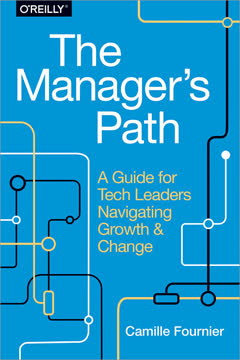Key Takeaways
1. Scalability Hinges on Good Software Design Principles
Many of the scalability issues encountered in real-world projects can be boiled down to violations of core design principles.
Foundation of Scalability. Scalability isn't just about infrastructure; it's deeply rooted in sound software design. Core principles like simplicity, loose coupling, and single responsibility lay the groundwork for systems that can adapt and grow efficiently. Neglecting these principles often leads to complex, brittle systems that struggle to handle increasing demands.
Design for Change. Scalable systems must be flexible and adaptable. Good design anticipates change and allows for modifications and extensions without requiring major overhauls. This involves careful consideration of dependencies, abstractions, and the overall architecture of the software.
Trade-offs are Inevitable. Applying design principles often involves trade-offs. There's no one-size-fits-all solution, and engineers must carefully weigh the costs and benefits of each decision. Over-engineering can be as detrimental as neglecting design principles altogether.
2. Simplicity: The Guiding Star for Scalable Systems
Make things as simple as possible, but no simpler.
Core Value. Simplicity should be a primary goal in software design. Simple systems are easier to understand, maintain, and scale. Complexity, on the other hand, introduces friction and increases the likelihood of errors.
Achieving Simplicity:
- Abstraction: Hide complexity behind well-defined interfaces.
- Avoid Overengineering: Resist the urge to build overly complex solutions.
- Test-Driven Development (TDD): Write tests first to ensure code is focused and necessary.
- Learn from Examples: Study systems known for their simplicity, such as Grails, Hadoop, and the Google Maps API.
Long-Term Benefits. Simplicity isn't just about making things easy now; it's about ensuring maintainability and extensibility in the future. A simple system is more likely to adapt to changing requirements and scale efficiently over time.
3. Loose Coupling: Minimizing Dependencies for Flexibility
Coupling is a measure of how much two components know about and depend on one another.
Reducing Interdependence. Loose coupling minimizes the dependencies between different parts of a system. This allows components to be modified, replaced, or scaled independently without affecting other parts of the system. High coupling, conversely, creates a ripple effect where changes in one area necessitate changes in others.
Benefits of Loose Coupling:
- Increased Flexibility: Easier to modify and extend individual components.
- Improved Scalability: Components can be scaled independently based on their specific needs.
- Reduced Complexity: Easier to understand and maintain individual components.
- Enhanced Team Productivity: Multiple teams can work on different components in parallel.
Achieving Loose Coupling:
- Manage Dependencies: Carefully control the dependencies between classes, modules, and applications.
- Code to Contract: Define clear interfaces and adhere to them strictly.
- Avoid Unnecessary Coupling: Be wary of practices that increase coupling, such as exposing private properties.
4. Automation: Scaling Productivity Through Efficiency
I think one of the most valuable rules is avoid duplication.
Key to Efficiency. Automation is crucial for scaling productivity and reducing operational overhead. By automating repetitive tasks, engineers can free up time to focus on more strategic initiatives.
Areas for Automation:
- Testing: Automate unit, integration, and end-to-end tests.
- Build and Deployment: Implement continuous integration and continuous deployment (CI/CD) pipelines.
- Monitoring and Alerting: Set up automated monitoring and alerting systems to detect and respond to issues quickly.
- Log Aggregation: Centralize and index logs for efficient troubleshooting.
Benefits of Automation:
- Reduced Errors: Automation minimizes the risk of human error.
- Faster Releases: Automated deployments enable more frequent releases.
- Improved Reliability: Automated monitoring and alerting lead to faster issue detection and resolution.
- Increased Efficiency: Engineers can focus on higher-value tasks.
5. The Front-End Layer: Managing State and Optimizing Delivery
The key to efficiently utilizing resources is stateless autonomous compute nodes.
First Line of Defense. The front end is the first point of contact for users and handles the highest volume of traffic. Efficiently managing state and optimizing content delivery are crucial for scalability.
Key Components:
- DNS: Use a reliable DNS provider for fast domain name resolution.
- Load Balancers: Distribute traffic across multiple web servers.
- Web Servers: Serve static and dynamic content.
- Caching: Implement HTTP caching and object caching to reduce server load.
- Content Delivery Networks (CDNs): Distribute static content globally for faster delivery.
Statelessness is Key. Front-end servers should be stateless to allow for easy horizontal scaling. Session data, files, and other types of state should be stored externally.
6. Web Services: Designing for Reuse and Independent Scaling
SOAs are like snowflakes—no two are alike.
Encapsulating Business Logic. Web services provide a layer of abstraction that encapsulates business logic and decouples it from the presentation layer. This allows for greater reuse, independent scaling, and easier maintenance.
Design Approaches:
- Web Services as an Alternative Presentation Layer: Add web services to an existing application as an additional interface.
- API-First Approach: Design the API contract first and then build the implementation and clients.
- Pragmatic Approach: Combine the best aspects of both approaches based on the specific needs of the project.
Scaling Web Services:
- Keep Services Stateless: Store session data and other state information externally.
- Cache Service Responses: Use HTTP caching to reduce the load on web service machines.
- Functional Partitioning: Divide the web services layer into smaller, independent services.
7. Data Layer: Choosing the Right Database and Scaling Strategies
You know what architecture really is? It is an art of drawing lines. With an interesting rule that once you have drawn a line all the dependencies that cross that line point in the same direction.
Foundation of Scalability. The data layer is often the most challenging part of a system to scale. Choosing the right database and implementing effective scaling strategies are crucial for handling large data volumes and high traffic loads.
Scaling with MySQL:
- Replication: Create multiple read replicas to distribute read traffic.
- Data Partitioning (Sharding): Divide the data set into smaller pieces and distribute them across multiple servers.
Scaling with NoSQL:
- Embrace Eventual Consistency: Trade strong consistency for higher availability and scalability.
- Faster Recovery: Focus on minimizing mean time to recovery (MTTR).
- Choose the Right Data Model: Select a data model that aligns with the access patterns of the application.
8. Caching: A Key Strategy for Performance and Scalability
The supreme art of war is to subdue the enemy without fighting.
Reducing Load. Caching is a fundamental technique for improving performance and scalability. By storing frequently accessed data in memory, caching reduces the need to retrieve it from slower data sources.
Types of Caches:
- HTTP Caches: Browser caches, caching proxies, reverse proxies, and CDNs.
- Application Object Caches: Local server caches and distributed object caches.
Caching Rules of Thumb:
- Cache High Up the Call Stack: The higher up the stack you cache, the more resources you save.
- Reuse Cache Among Users: Maximize cache hit ratio by caching data that can be shared across users.
- Cache Invalidation Is Difficult: Minimize the need for cache invalidation by using short TTLs or alternative strategies.
9. Asynchronous Processing: Leveraging Message Queues and EDA
The key to efficiently utilizing resources is stateless autonomous compute nodes.
Decoupling and Parallelism. Asynchronous processing and message queues enable decoupling and parallelism, allowing systems to handle high volumes of requests and improve fault tolerance.
Core Concepts:
- Message Queues: Buffer and distribute asynchronous requests.
- Message Producers: Create and publish messages to the queue.
- Message Consumers: Receive and process messages from the queue.
- Event-Driven Architecture (EDA): A design pattern where components react to events rather than making direct requests.
Benefits of Message Queues:
- Enabling Asynchronous Processing: Defer processing of time-consuming tasks.
- Easier Scalability: Scale producers and consumers independently.
- Evening Out Traffic Spikes: Buffer requests during peak loads.
- Isolating Failures and Self-Healing: Prevent failures in one component from affecting others.
- Decoupling: Reduce dependencies between components.
10. Searching for Data: Indexing and Modeling for Efficient Retrieval
You know what architecture really is? It is an art of drawing lines. With an interesting rule that once you have drawn a line all the dependencies that cross that line point in the same direction.
Optimizing Data Access. Efficiently searching for data is crucial for scalability. Understanding indexing techniques and data modeling principles is essential for building systems that can handle large data volumes.
Indexing Techniques:
- Indexes: Create sorted lists of data to speed up searches.
- Compound Indexes: Combine multiple fields in an index to narrow down search results.
- Inverted Indexes: Allow for full-text searching.
Data Modeling Principles:
- Model for Queries: Design the data model around the access patterns of the application.
- Denormalize Data: Reduce the need for joins by embedding related data in a single document.
- Use a Dedicated Search Engine: Leverage specialized search engines for complex queries.
Last updated:
FAQ
What is "Web Scalability for Startup Engineers" by Artur Ejsmont about?
- Comprehensive guide for startups: The book provides a holistic roadmap for engineers to understand and implement web application scalability, focusing on both technical and organizational aspects relevant to startups.
- Core concepts and techniques: It covers essential topics such as caching, asynchronous processing, data modeling, operational scalability, and engineering culture.
- Emphasis on tradeoffs: Artur Ejsmont stresses that scalability is about making informed tradeoffs, not following one-size-fits-all solutions, and encourages open-mindedness in technology choices.
- Practical, real-world advice: The book is filled with actionable guidance and real-world examples to help engineers build scalable systems efficiently in fast-paced startup environments.
Why should I read "Web Scalability for Startup Engineers" by Artur Ejsmont?
- Bridges knowledge gaps: The book is tailored for engineers who may lack deep scalability experience, providing accessible, practical knowledge to help them "level up."
- Covers technical and organizational growth: It addresses not only system design but also team scaling, personal productivity, and avoiding burnout, making it valuable for both engineers and leaders.
- Focus on startup challenges: The advice is specifically relevant to startups, where rapid growth, resource constraints, and agility are critical.
- Real-world best practices: Readers gain insights from industry standards and the author's hands-on experience, helping them avoid common pitfalls and design robust systems.
What are the key takeaways from "Web Scalability for Startup Engineers" by Artur Ejsmont?
- Scalability is multi-dimensional: The book explains that scalability involves handling more data, higher concurrency, and increased interaction rates, each with unique challenges.
- Tradeoffs are essential: There are no silver bullets; every architectural or technology choice involves tradeoffs between performance, consistency, complexity, and cost.
- Holistic approach: Success requires attention to software design, infrastructure, automation, team processes, and personal productivity.
- Continuous learning and adaptation: The book encourages engineers to stay open-minded, mix technologies as needed, and focus on building what customers truly need.
What are the core concepts of scalability explained in "Web Scalability for Startup Engineers"?
- Definition of scalability: Scalability is the ability to adjust system capacity cost-efficiently to meet demand, handling more users, data, or requests without degrading user experience.
- Three dimensions of scaling: The book highlights scaling for data volume, concurrency (simultaneous users), and interaction rate (request frequency).
- Evolution of scalable systems: It outlines the journey from single-server setups to vertical scaling, service isolation, horizontal scaling, and global scalability with multiple data centers.
- Startup-specific focus: The book addresses the unique scaling needs and constraints faced by startups, such as rapid growth and limited resources.
What are the key software design principles for scalability in "Web Scalability for Startup Engineers"?
- Simplicity and abstraction: Keep software as simple as possible, hiding complexity and avoiding overengineering to aid maintainability and scalability.
- Loose coupling: Minimize dependencies between components, enabling independent development and scaling of system parts.
- Single responsibility and open-closed principle: Design modules with one responsibility and make them open for extension but closed for modification, supporting easier scaling and maintenance.
- Dependency injection: The book also discusses using dependency injection to further decouple components and improve testability.
How does Artur Ejsmont recommend building a scalable front-end layer in "Web Scalability for Startup Engineers"?
- Stateless front-end servers: Push all state (sessions, files, locks) out to shared stores or clients, allowing easy horizontal scaling by adding server clones.
- Externalize state management: Use cookies or external data stores for sessions, distributed file storage for files, and shared caches or distributed locks for other stateful needs.
- Caching and load balancing: Integrate CDNs for static content, use reverse proxies and object caches to reduce load, and deploy load balancers to distribute traffic efficiently.
- Focus on horizontal scalability: Statelessness and externalized state enable seamless scaling by simply adding more front-end servers.
What approaches to web service design are discussed in "Web Scalability for Startup Engineers"?
- Monolithic with web service extension: Start with a single application and add web services as an alternative interface, which is fast but less scalable long-term.
- API-first approach: Design and build the API contract before clients and implementation, promoting reuse, decoupling, and scalability, though it requires more upfront planning.
- Pragmatic hybrid: Begin monolithic and add services as needed, balancing speed and scalability, which is common in evolving startups.
- Tradeoff awareness: Each approach has its own benefits and drawbacks, and the book encourages choosing based on current and future needs.
What types of web services and protocols does "Web Scalability for Startup Engineers" cover, and how do they impact scalability?
- Function-centric (RPC/SOAP) services: Allow clients to invoke functions remotely, but are complex, less cacheable, and often stateful, making scalability harder.
- Resource-centric (REST) services: Use standard HTTP methods on resources, are stateless, cacheable, and simpler to implement and scale, especially for web and mobile clients.
- Tradeoffs between SOAP and REST: SOAP offers strict contracts and enterprise features but is heavyweight; REST is lightweight and scalable but less strict.
- Startup preference: The book notes that REST is generally more suitable for startups due to its simplicity and scalability.
How does "Web Scalability for Startup Engineers" by Artur Ejsmont explain caching strategies and their importance?
- Cache hit ratio fundamentals: Cache effectiveness depends on cache key space, cache size, and object longevity (TTL); optimizing these improves hit ratio.
- Types of caches: The book distinguishes between HTTP-based caches (browser, proxies, CDNs) and custom object caches (client-side, co-located, distributed), each with different scalability and complexity tradeoffs.
- Cache invalidation challenges: Invalidation is notoriously hard; the book recommends using short TTLs or hybrid solutions over complex invalidation logic.
- Practical advice: Effective caching can dramatically reduce load and latency, but requires careful design to avoid stale or inconsistent data.
What does "Web Scalability for Startup Engineers" teach about asynchronous processing, messaging, and event-driven architecture?
- Synchronous vs. asynchronous: Synchronous processing blocks execution and can cause latency, while asynchronous processing enables parallelism and responsiveness.
- Message queues and brokers: Message queues buffer requests and decouple producers from consumers; brokers manage routing, persistence, and delivery.
- Event-driven architecture (EDA): EDA allows components to announce events without knowing consumers, leading to high decoupling and scalable, flexible systems.
- Benefits and challenges: Messaging and EDA enable scalability and failure isolation but introduce complexity, race conditions, and message ordering issues.
How does "Web Scalability for Startup Engineers" approach data modeling and searching for scalable web applications?
- NoSQL data modeling: Focuses on access patterns and queries rather than normalization, using denormalization and data duplication to optimize for scalability.
- Wide columnar stores example: Demonstrates modeling with Cassandra, using compound indexes and duplicating data in multiple tables for efficient querying.
- Tradeoffs: Denormalization and data duplication improve scalability but complicate updates and increase redundancy.
- Search engines for complex queries: Recommends using tools like Elasticsearch or Solr for full-text search, leveraging inverted indexes for efficient keyword and phrase searches.
What operational scalability and automation advice does Artur Ejsmont provide in "Web Scalability for Startup Engineers"?
- Automate testing and deployment: Advocates for automated testing and continuous integration/delivery pipelines to reduce manual effort and enable rapid releases.
- Monitoring and alerting: Recommends automated monitoring, alerting, and centralized log aggregation to speed up failure detection and debugging.
- Scaling operations and teams: Stresses the importance of configuration management, automated deployments, and clear on-call procedures for efficient operations.
- Team and personal productivity: Discusses building cross-functional teams, managing workload, and avoiding burnout through sustainable work practices.
What are the best quotes from "Web Scalability for Startup Engineers" by Artur Ejsmont and what do they mean?
- On caching: “There are only two hard things in computer science: cache invalidation and naming things and off-by-one errors.” – Phil Karlton. This highlights the notorious difficulty of cache invalidation and the need for pragmatic solutions.
- On automation: “If you want something to happen, ask. If you want it to happen often, automate it.” – Ivan Kirigin. This underscores the importance of automation in scaling productivity and operations.
- On architecture: “Good architecture maximizes the number of decisions not made.” – Robert C. Martin. This advises designing flexible, simple systems that avoid premature or unnecessary decisions.
- On decoupling: “Whenever we can separate two components to a degree that they do not know about each other’s existence, we have achieved a high degree of decoupling.” This emphasizes the value of loose coupling for scalability and maintainability.
- On resilience: “Hope for the best, prepare for the worst.” This reminds engineers to anticipate failures and design resilient systems and workflows.
Review Summary
Web Scalability for Startup Engineers receives high praise for its comprehensive coverage of scalability concepts. Readers appreciate its accessibility, pragmatic approach, and breadth of topics. The book is considered an excellent introduction to distributed systems and system design, particularly for junior to mid-level engineers. While some information may be outdated, it remains a valuable resource for understanding scalable web architectures. Reviewers commend its clear explanations, practical advice, and holistic view of large-scale systems. Many recommend it as a starting point for learning about scalability in web development.
Similar Books










Download PDF
Download EPUB
.epub digital book format is ideal for reading ebooks on phones, tablets, and e-readers.





